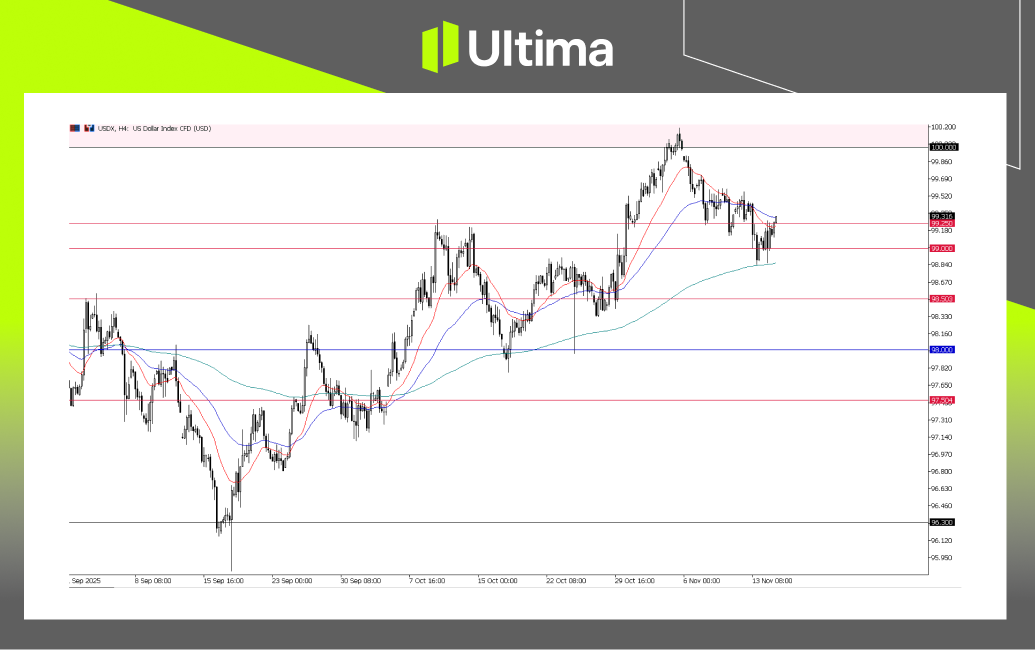Policy disagreements dominate global markets; silver hits record high, USD/JPY under pressure
Global markets opened today caught in a tug-of-war between policy uncertainty and structural changes. Despite limited volatility on Monday, the latest macroeconomic news has revealed a clear policy divergence – a slowdown in US economic growth versus rising risks of interest rate hikes in Japan, directly impacting the dollar’s performance, USD/JPY, and precious metal prices.
The US ISM Manufacturing PMI indicates increasing pressure on economic slowdown.
The newly released November ISM Manufacturing PMI weakened again, casting a shadow over the optimistic narrative of “economic resilience.”
- The index fell to 48.2 , marking the ninth consecutive month below the 50-point contraction threshold.
- It also hit a nearly four-month low.
The prolonged contractionary trend highlights the continued suppression of the real economy by high interest rates, which is detrimental to cyclical sectors such as energy and industry. However, this “bad news” has further strengthened market bets on
a December rate cut by the Federal Reserve , supporting demand for safe-haven and defensive assets.
The Bank of Japan has signaled the risk of interest rate hikes, fueling expectations of a narrowing US-Japan interest rate differential.
In stark contrast to weak US economic data, Bank of Japan Governor
Kazuo Ueda clearly signaled a hawkish stance in his latest remarks:
- If “underlying inflation” accelerates further, the Bank of Japan is prepared to adjust its policy.
- The adjustment may include a formal interest rate hike.
- The Bank of Japan is also monitoring the impact of the new government’s fiscal stimulus on inflation.
This signal is quite different from the Fed’s gradual shift towards easing, and the market has begun pricing in
a narrowing of the US-Japan interest rate differential in early 2026 , putting downward pressure on
USD/JPY .
Market News: Silver breaks through $58; Trump appoints new Federal Reserve Chairman
1. Trump finalizes nominee for Federal Reserve Chair
US President Trump announced that he has chosen his successor as the next Federal Reserve Chairman, succeeding Jerome Powell. This move adds uncertainty to the policy outlook for 2026.
- The market is focused on whether the new chairman will be more dovish or hawkish.
- With the candidate’s stance still unclear, this news may limit the short-term upside potential of
the US dollar index.
2. Silver hits a record high ($58/ounce)
Spot silver broke through
$58/ounce for the first time , setting a new historical high and becoming one of the focal assets of this round of market activity.
- Long-term structural supply shortage
- Industrial demand continues to rise
- Market expectations that a Federal Reserve rate cut would bring “cheaper money” fueled an influx of speculative funds.
Silver is showing strong upward momentum, supported by both a supply gap and expectations of monetary easing.
Today’s focus: USD/JPY and silver, gold
With the earlier US government shutdown causing delays in economic data, and a lack of major data releases this week, market focus has shifted:
- the US economic slowdown and the Bank of Japan’s hawkish turn being priced in?
- Is the USD/JPY pair turning further bearish?
- Risks and opportunities in silver and gold trading at high levels.
USD/JPY: Price Movement Risks Amid Narrowing Policy Spreads
With the combination of “the Federal Reserve may cut interest rates, while the Bank of Japan may raise interest rates,” USD/JPY is facing pressure from both sides:
- Federal Reserve: Weak ISM manufacturing data supports expectations of a December rate cut.
- Bank of Japan: Ueda’s hawkish comments make the yen attractive as the dollar weakens.
 USD/JPY, Daily Chart | Ultima Market MT5
From a technical perspective:
USD/JPY, Daily Chart | Ultima Market MT5
From a technical perspective:
- The overall structure remains bullish, but downside risks are rising in the short term.
- 156.50–158.00 range represents the previous high in January 2025 and is a significant resistance zone.
- If the exchange rate encounters resistance and falls back in this area, it could reinforce market expectations of a “trend slowdown or even reversal.”
Short-term traders can pay attention to the price action of USD/JPY near the resistance zone, as well as subsequent signals from the Bank of Japan and the Federal Reserve.
Silver: Momentum-driven rally after hitting a new all-time high
 XAGUSD, H4 Chart | Ultima Market MT5
XAGUSD, H4 Chart | Ultima Market MT5
Silver is currently trading in a “vacuum” above
$58 , with prices primarily driven by momentum and sentiment.
- With no historical technical resistance above, the psychological level of $60 becomes the next target for the bulls.
- Structural supply shortages and expectations of interest rate cuts remain the core of the bullish narrative.
The risk of a pullback should also be noted:
- Key support levels in the near term are at 56.50 and 54.50.
- A break below this level could indicate increased pressure for short-term bulls to take profits.
Gold: Finding a balance between easing expectations and risk sentiment
While silver became the market leader, gold also benefited:
- Pricing
the Fed’s rate-cutting cycle
- Hedging demand against economic slowdown and policy uncertainty
Gold currently plays more of a “structural defensive asset” role. With a weaker dollar and expectations of declining real interest rates, it may still attract medium- to long-term buying on pullbacks.
Daily Market Summary
- The US ISM Manufacturing PMI remained below 50, confirming industrial weakness, increasing the likelihood of a December rate cut, and supporting defensive assets.
- The Bank of Japan’s hawkish stance has increased the likelihood of an interest rate hike, and expectations of a narrowing interest rate differential between the US dollar and Japan have grown, putting pressure on the USD/JPY exchange rate.
- Silver hit a record high , becoming the leading commodity in this round of price increases, driven by supply shortages and speculative funds.
- Gold remained stable, supported by risk sentiment and expectations of further easing; its upside potential depends on subsequent data and policy signals.
For traders, the key today is to track the USD/JPY’s reaction to policy divergences, assess a potential technical pullback in silver from its highs, and monitor gold’s support levels during the consolidation phase.
Disclaimer
The comments, news, research, analysis, prices, and other information contained herein are for informational purposes only and are intended to help readers understand market conditions. They do not constitute investment advice. Ultima Markets has taken reasonable steps to ensure the accuracy of the information, but cannot guarantee its absolute accuracy and it is subject to change without notice. Ultima Markets shall not be liable for any loss or damage (including, but not limited to, loss of profits) that may result from the direct or indirect use of or reliance on such information.


























